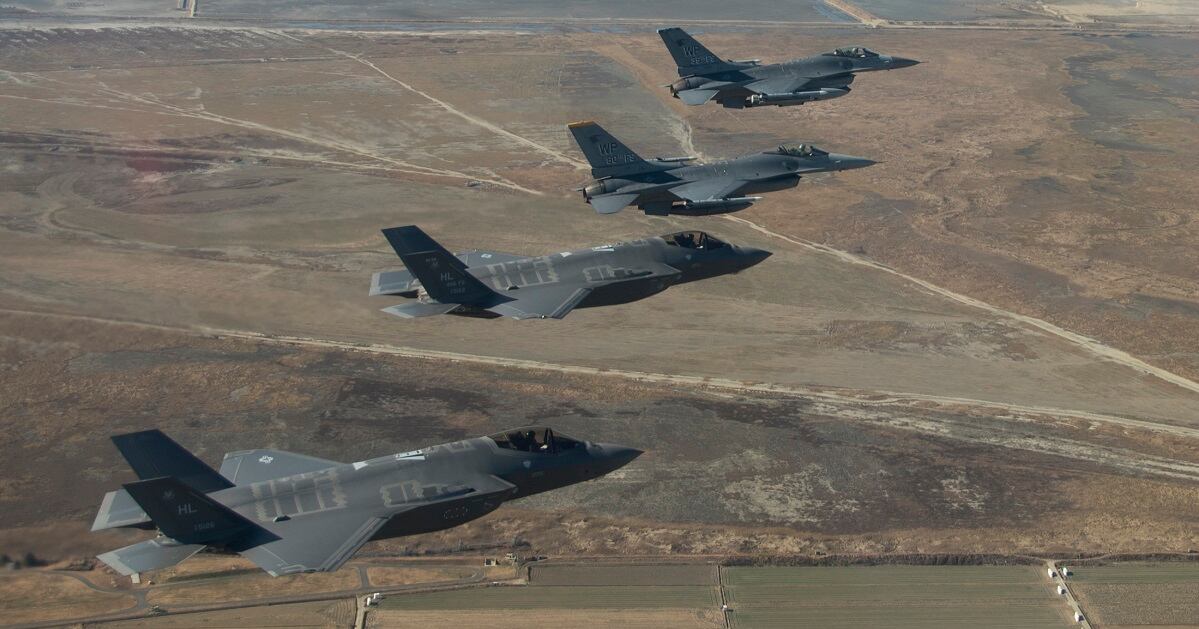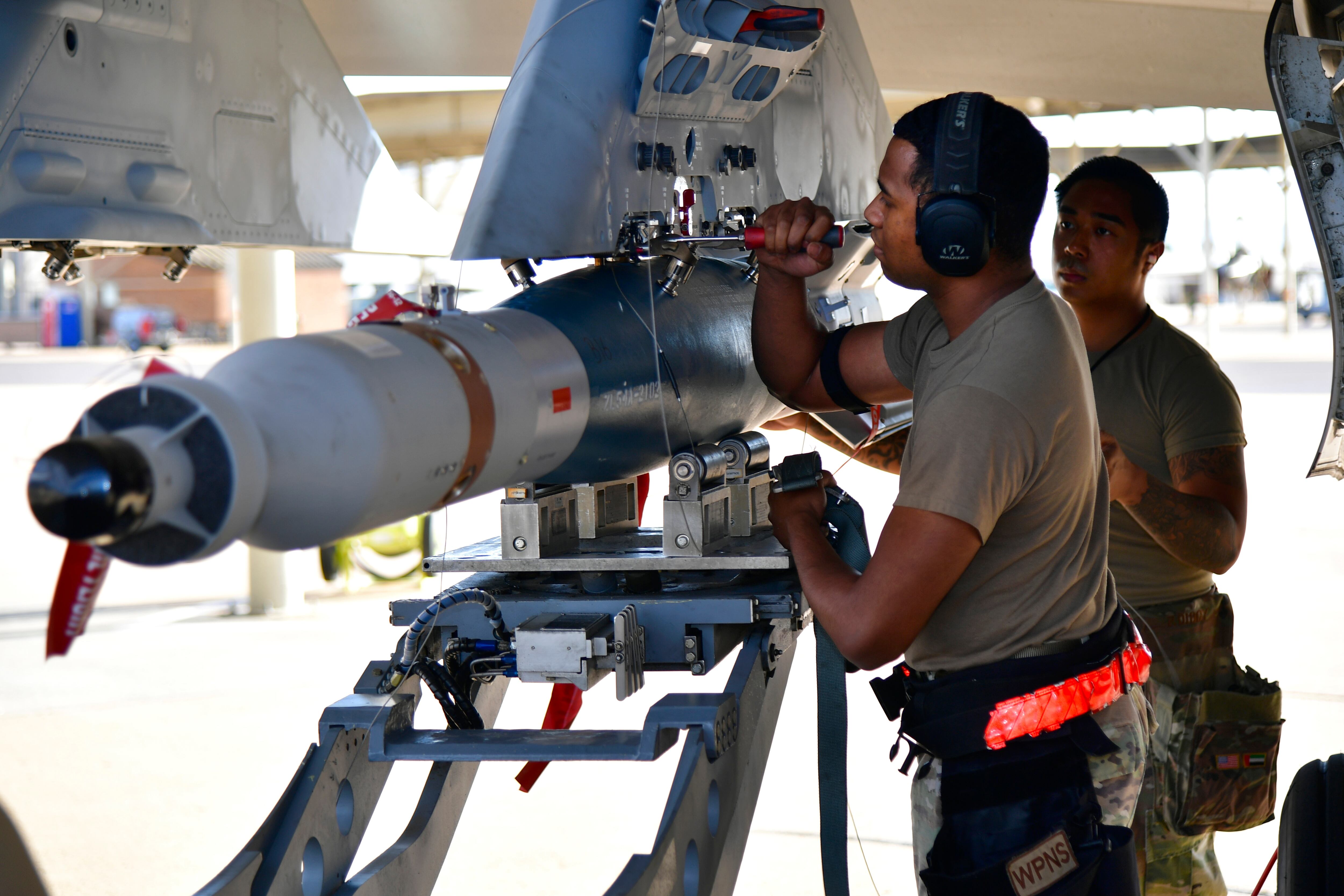Airmen from multiple fighter units built, loaded and deployed a variety of munitions from the F-35A and other aircraft in early August in a major evaluation exercise at Hill Air Force Base in Utah.
The Combat Hammer evaluation, formally known as the Weapons System Evaluation Program West, was run by the 86th Fighter Weapons Squadron at Hill Aug. 10 to 13, the base said Wednesday. The exercise is meant to show commanders the effectiveness of weapons used in combat, including their accuracy and sustainability, their suitability against certain targets, and how proficient maintainers and pilots are at using them.
The 34th Fighter Squadron, 388th Fighter Wing, and reservists from the 419th Fighter Wing, both at Hill, also took part in the evaluation.
Maintainers built GBU-31 direct-attack munitions, GBU-39 small-diameter bombs and GBU-12 laser-guided bombs and loaded them onto F-35s as part of the evaluation, according to Hill’s news release.
RELATED

Pilots then dropped the bombs, which included both live and inert munitions, on the Utah Test and Training Range. Evaluators from the 86th collected data on how well they performed, Hill officials said.

“Combat Hammer provides our maintainers — builders and loaders — training in weapon delivery and weapon loading that we don’t see during normal training sorties,” said Capt. Susan McLeod, officer in charge of the 34th Aircraft Maintenance Unit, in the release. “We may only see them during combat. It is important to train and test the weapon delivery and weapon loading process to make it as safe, efficient and seamless as possible for the operator in the cockpit.”
F-35s from Nellis Air Force Base in Nevada, B-1s from Ellsworth Air Force Base in South Dakota, and MQ-9s from Creech Air Force Base in Nevada also took part in the evaluation. Some made round-trips from their home stations to the training range, and did not take off from Hill.
Hill said that the 34th’s recent eight-month deployment to the Middle East, which ended in June, paid off because its airmen had skill and speed when loading weapons. The experienced airmen who had deployed also were able to teach younger airmen who had not deployed before, the release said.
Stephen Losey is the air warfare reporter for Defense News. He previously covered leadership and personnel issues at Air Force Times, and the Pentagon, special operations and air warfare at Military.com. He has traveled to the Middle East to cover U.S. Air Force operations.




